There are a lot of gardeners in Sacramento that are starting gardens. They are a source of rich, natural foods to supplement your diet and provide a small amount towards becoming more independent or sustainable. There are many reasons I chose raised beds for my garden even though I have plenty of room for a garden. The raised beds allow the soil to heat up faster in the spring, so you can plant your plants earlier than a regular garden with tilled soil. You can control the soil better with amendments creating a more robust environment for your plants. The soil does not compact, giving better drainage due to you not stepping on them or losing the soil into the ground.
There are several different types of raised beds.
Charles Dowling uses free-standing beds, which he describes as no-till. His Beds are raised on top of the cardboard. Then add a cloth barrier to control the beds and the soil. If you watch his shows on YOUTUBE, there is so much to learn. Mr. Dowling is a firm believer in using compost regularly and tending his beds daily.
My oldest bed is 4ftx20ft and runs along the side of my house next to the kitchen. I regularly each year amend the soil with compost, potting soil, and manure. This bed is mainly for quick harvesting for dinner. I have spring peas, onions, lettuce, chard, petite tomatoes, and herbs. Later, when the peas are finished, I plant pole beans. I built it from 2x12ft treated wood, lined with a rigid plastic over 15 years ago. Still going strong.
The fifteen smaller beds (4ftx4ft, 6ftx4ft, and 4ftx 5ft) vary in sizes. They are built from redwood or cedarwood, steel or plastic. Some have trellises built at the end, while others are flat. I have most of them fenced with chicken wire due to having free-running chickens in my yard. They are always interested in trying to help me when I am working. I often share greens and over-ripe vegetables with them.
When first establishing the beds, I put a layer of hardware cloth, then covered it with cardboard to give a firm bottom to the bed. Over time, the worms have eaten the cardboard and left terrific presents for the plants. It is essential (at least to me) to mix a 50:50 ratio of compost and either potting soil or topsoil to start the bed.
The main secret to success is in preplanning. I have covered this topic before, but to summarize:
- Make sure the plants are happy in your geographic area
- Make sure you plant plants (companion planting) that like each other
- Water and feed as they grow
- Protect them when necessary.
The next posting will discuss how to help your plants be the best they can be.

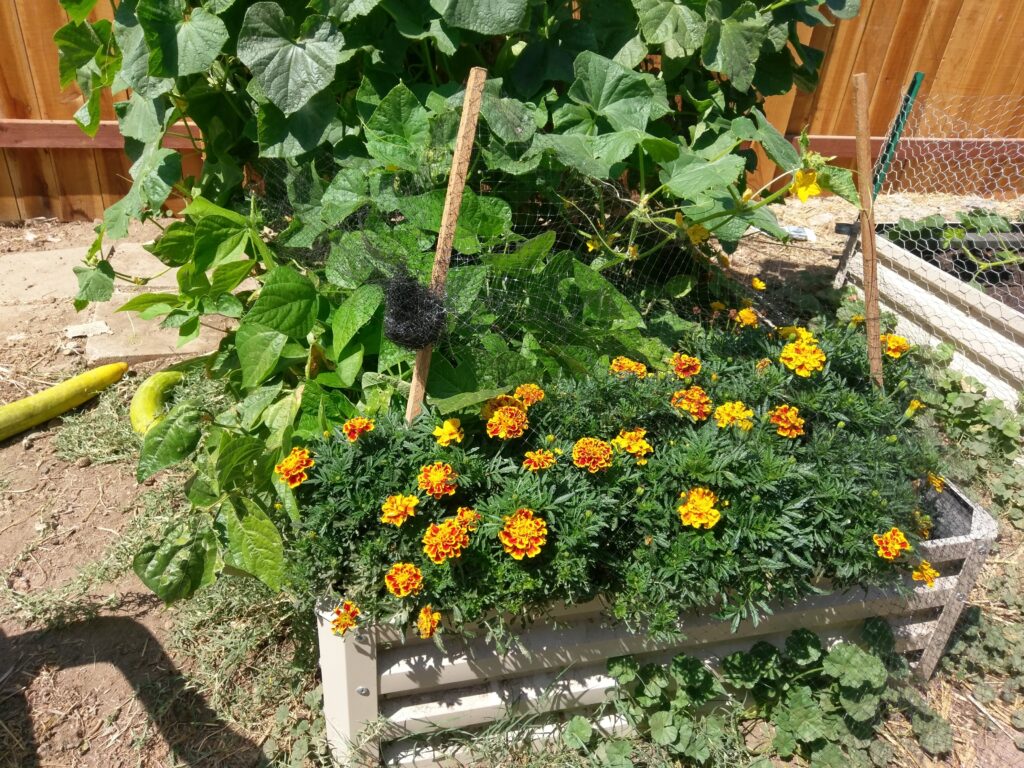
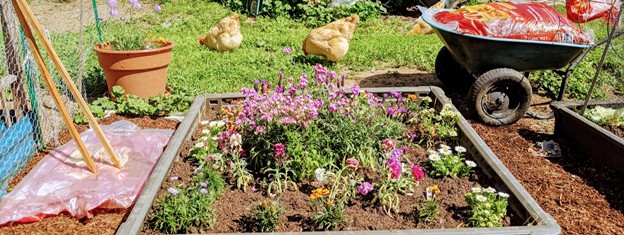

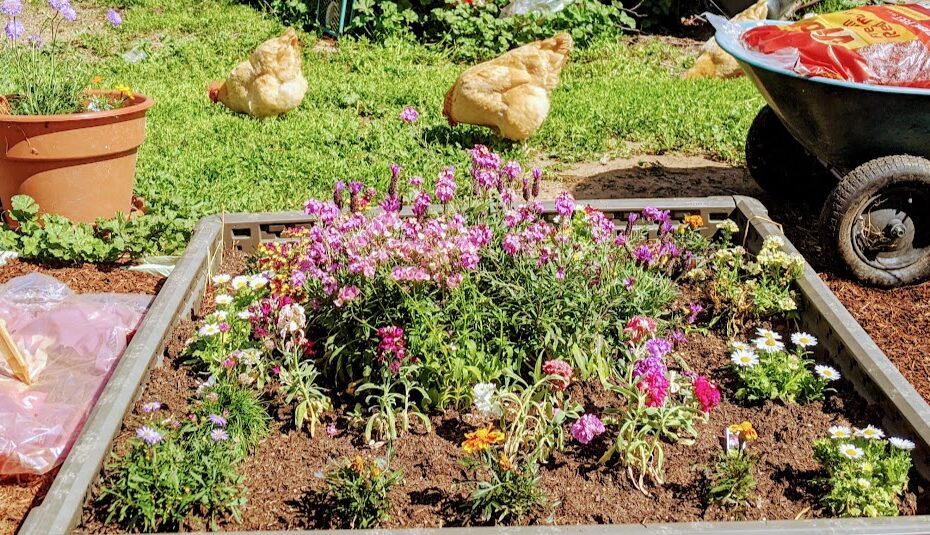

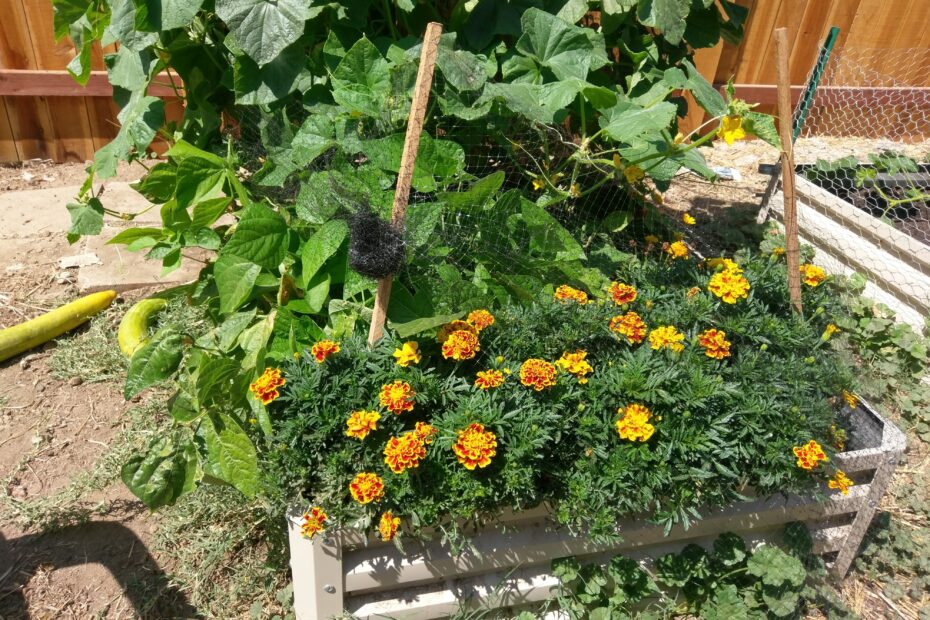
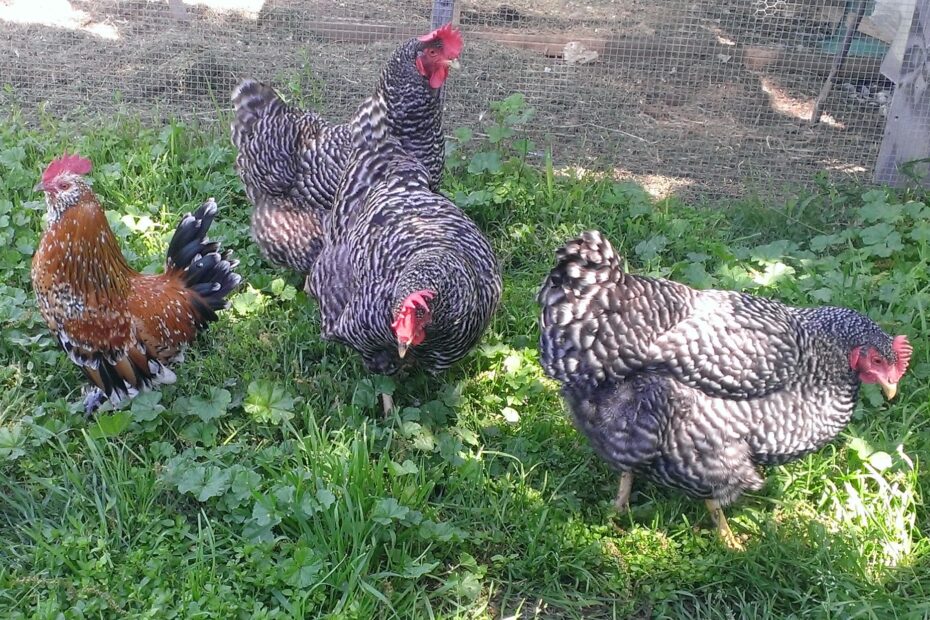
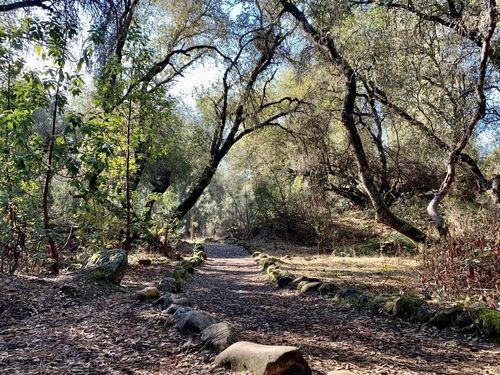
Leave a Comment
Your email address will not be published. Required fields are marked *